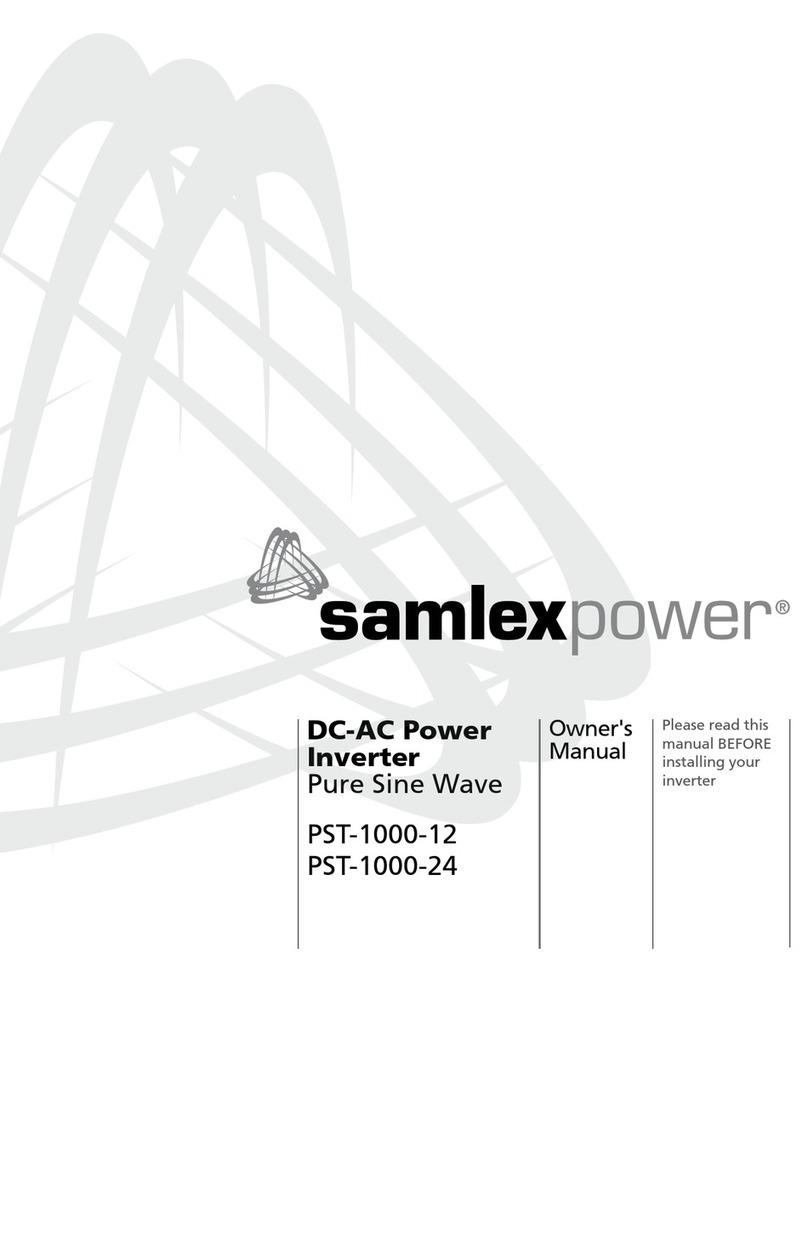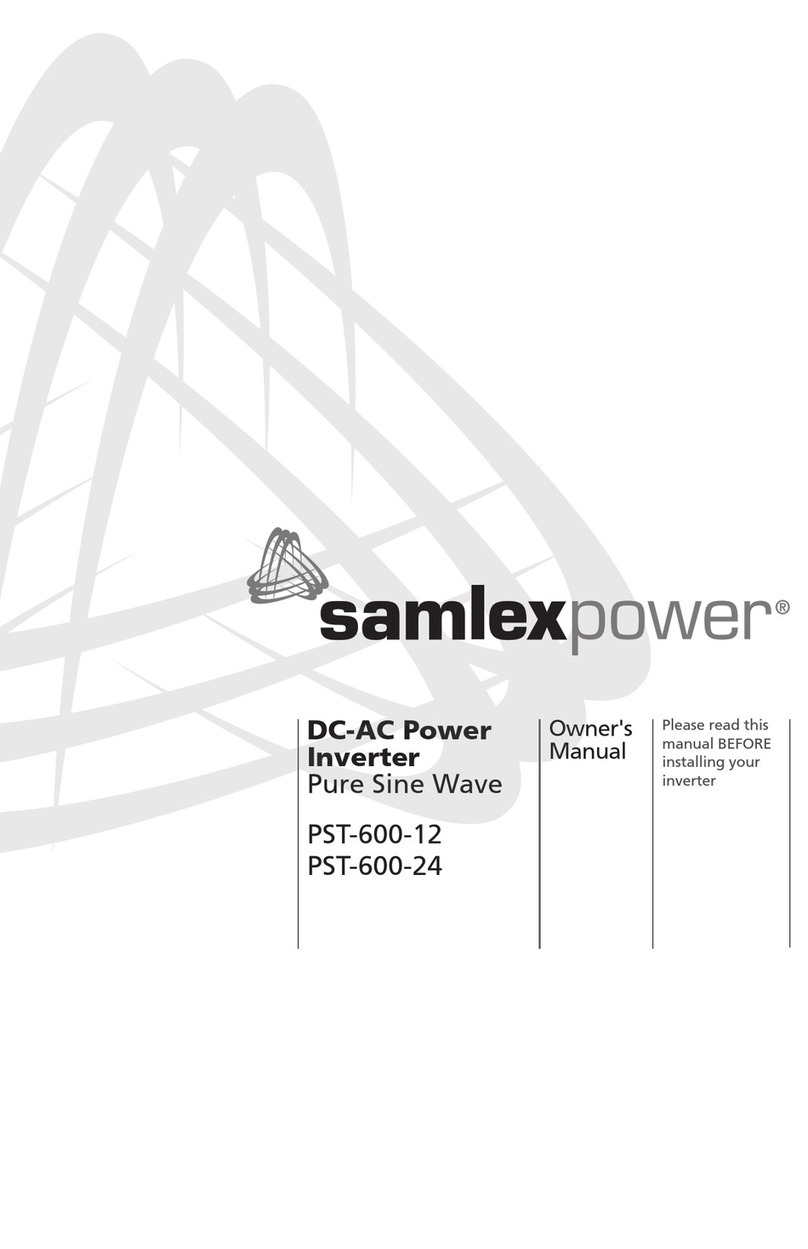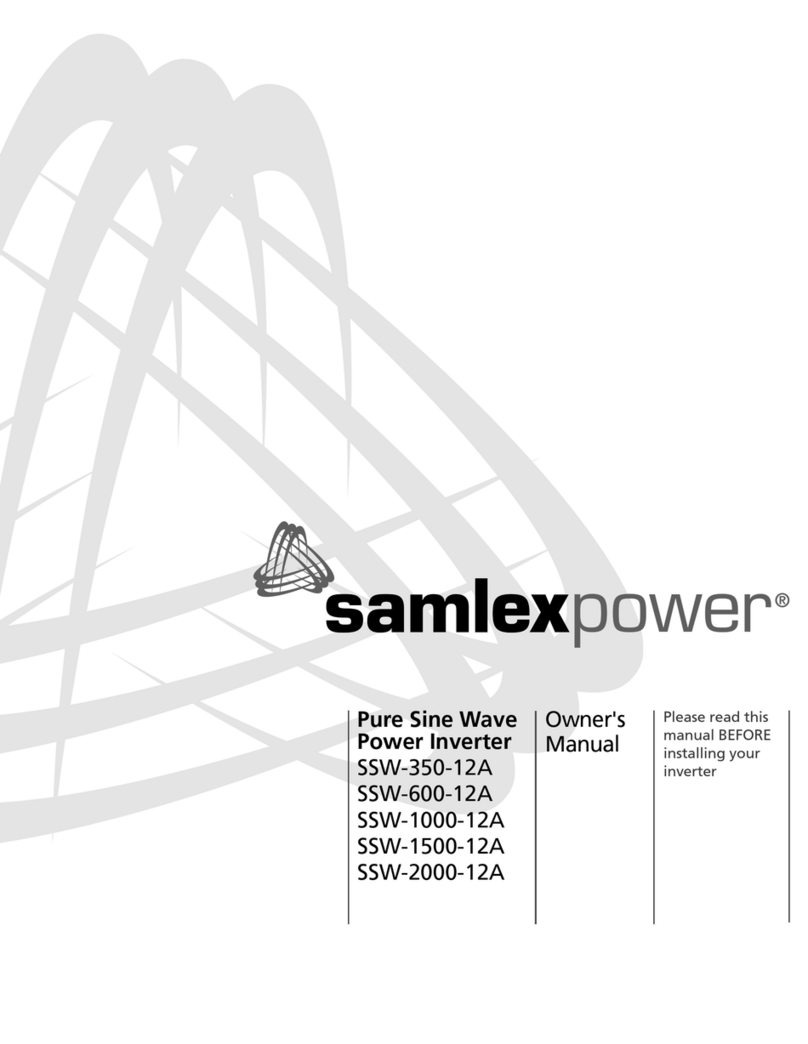SamplexPower SA-1500-112 User manual
Other SamplexPower Inverter manuals
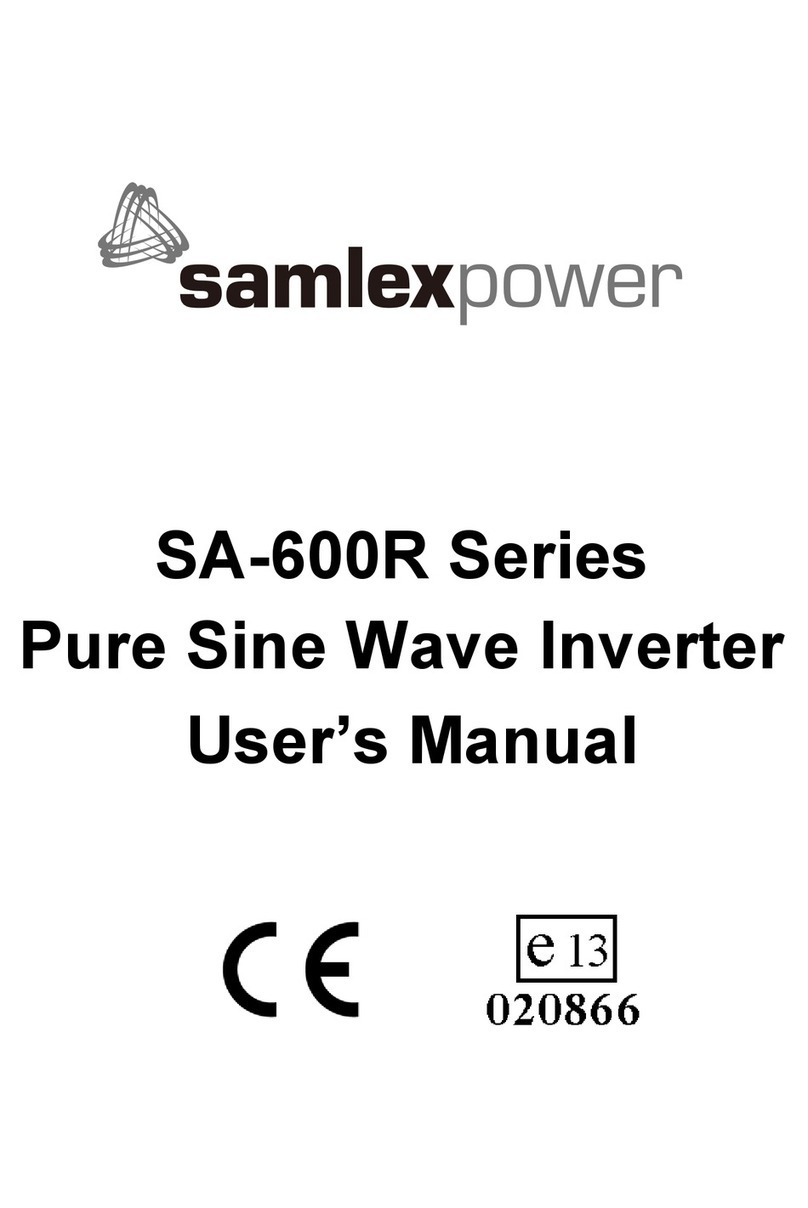
SamplexPower
SamplexPower SA-600R-112 User manual
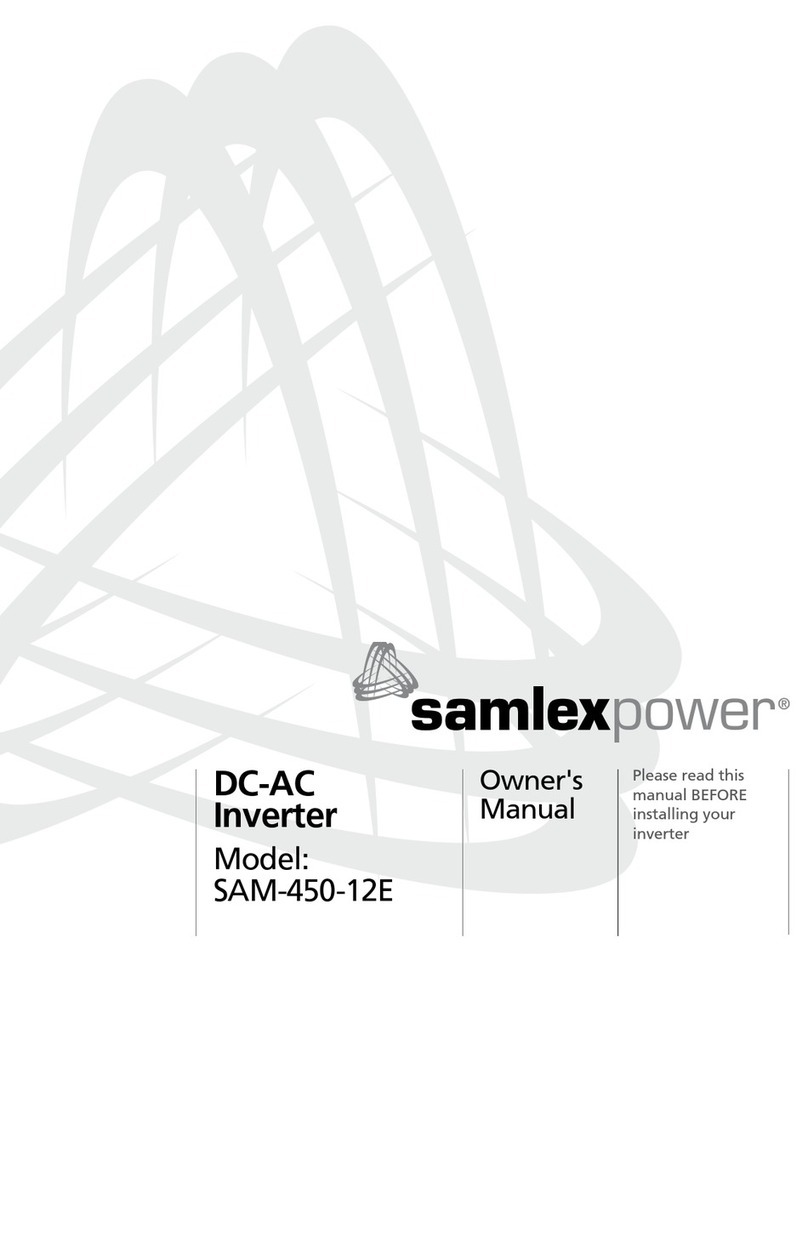
SamplexPower
SamplexPower SAM-450-12E User manual
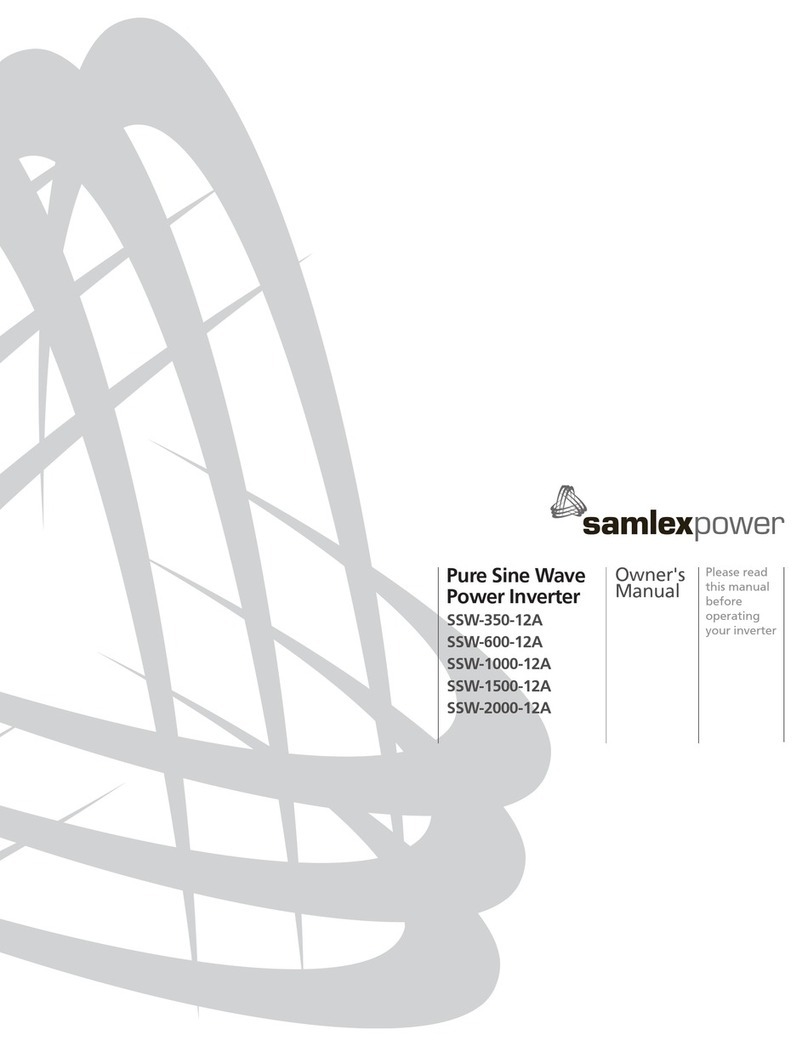
SamplexPower
SamplexPower SSW-350-12A User manual
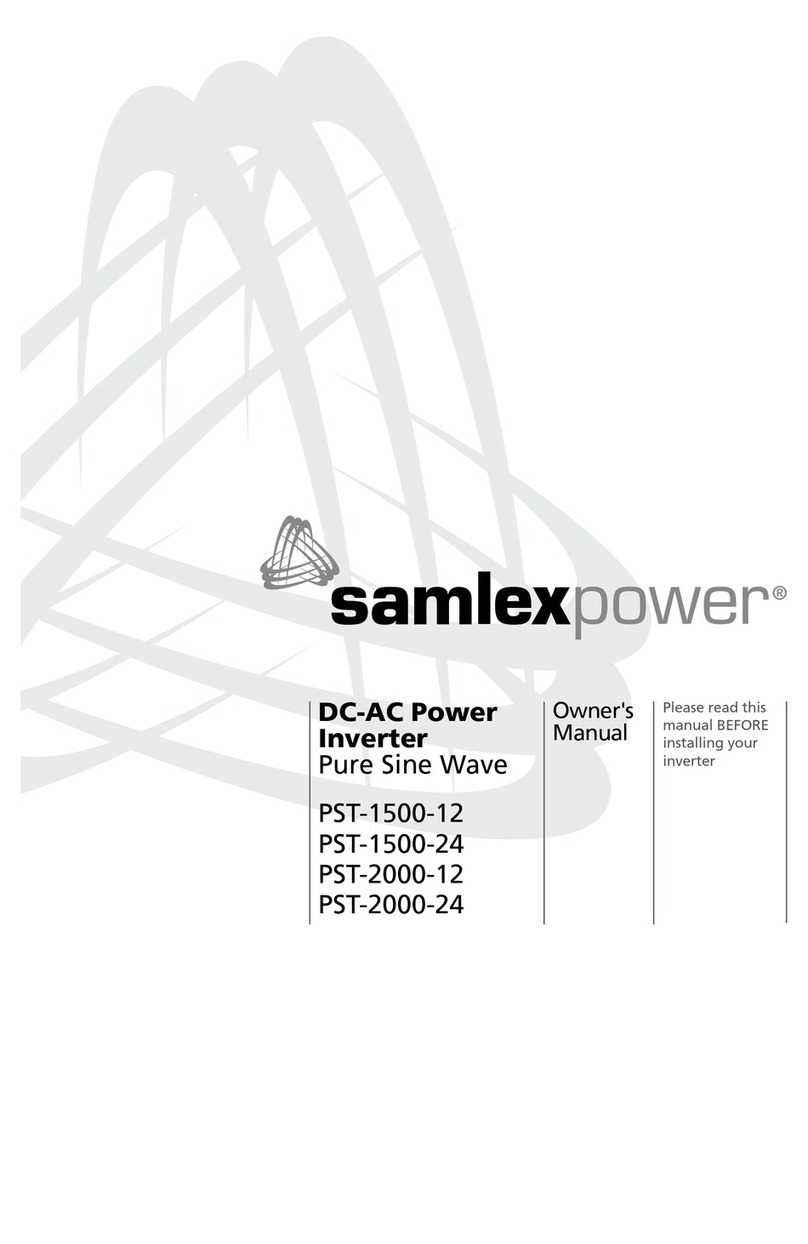
SamplexPower
SamplexPower PST-1500-12 User manual
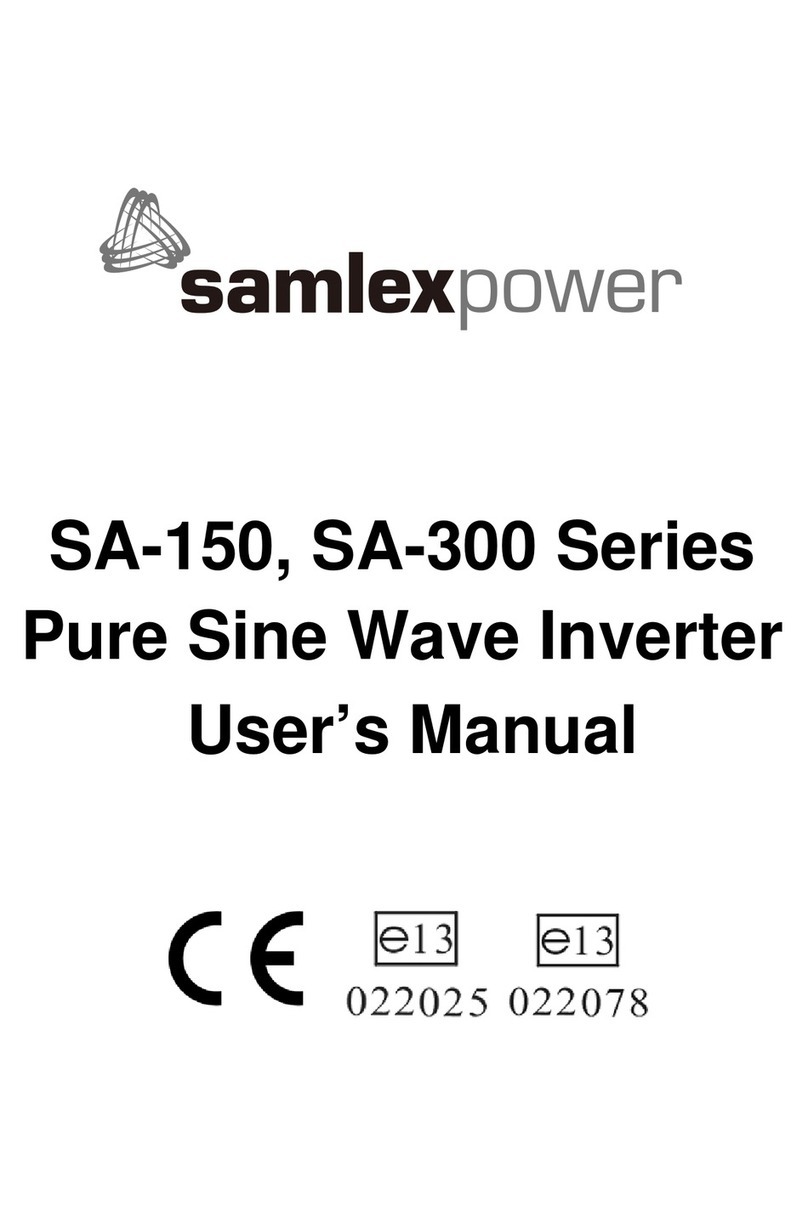
SamplexPower
SamplexPower SA-150-112 User manual
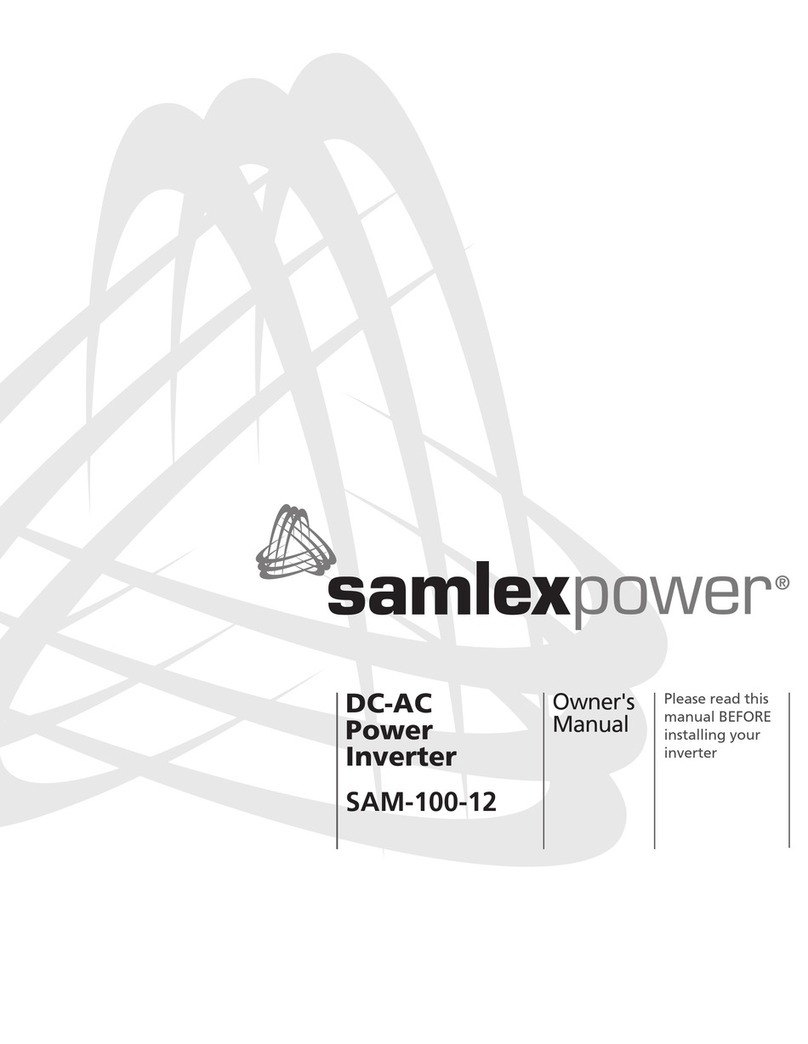
SamplexPower
SamplexPower SAM-100-12 User manual
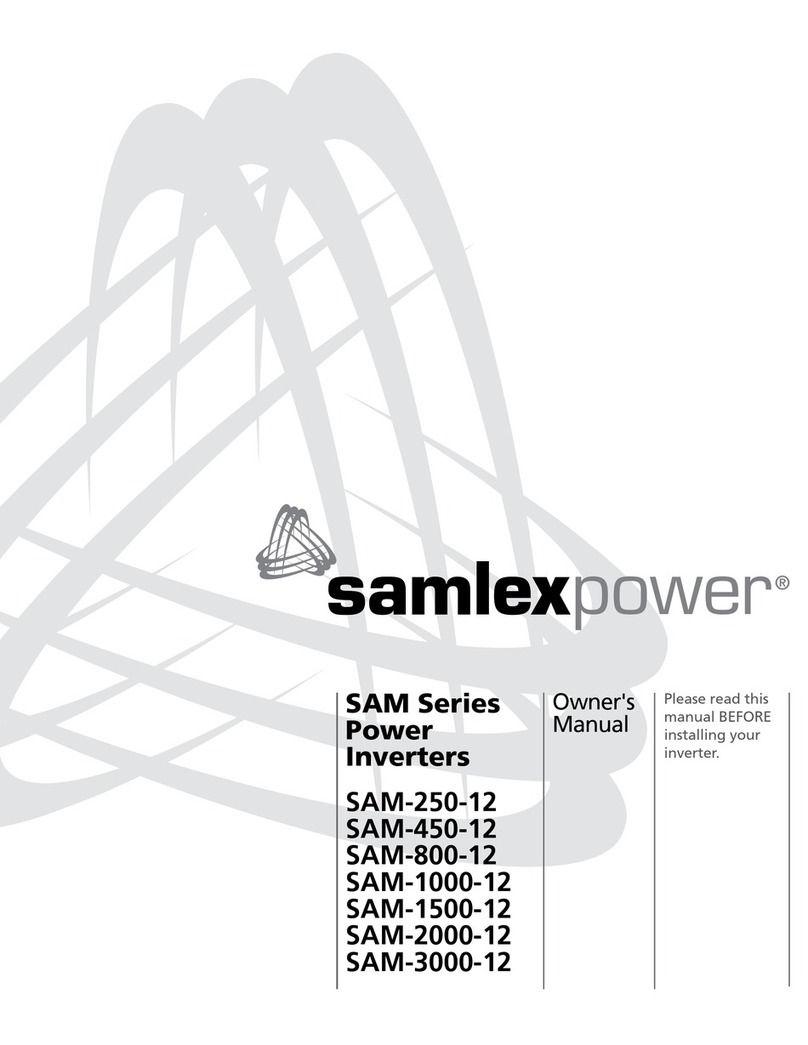
SamplexPower
SamplexPower SAM-250-12 User manual
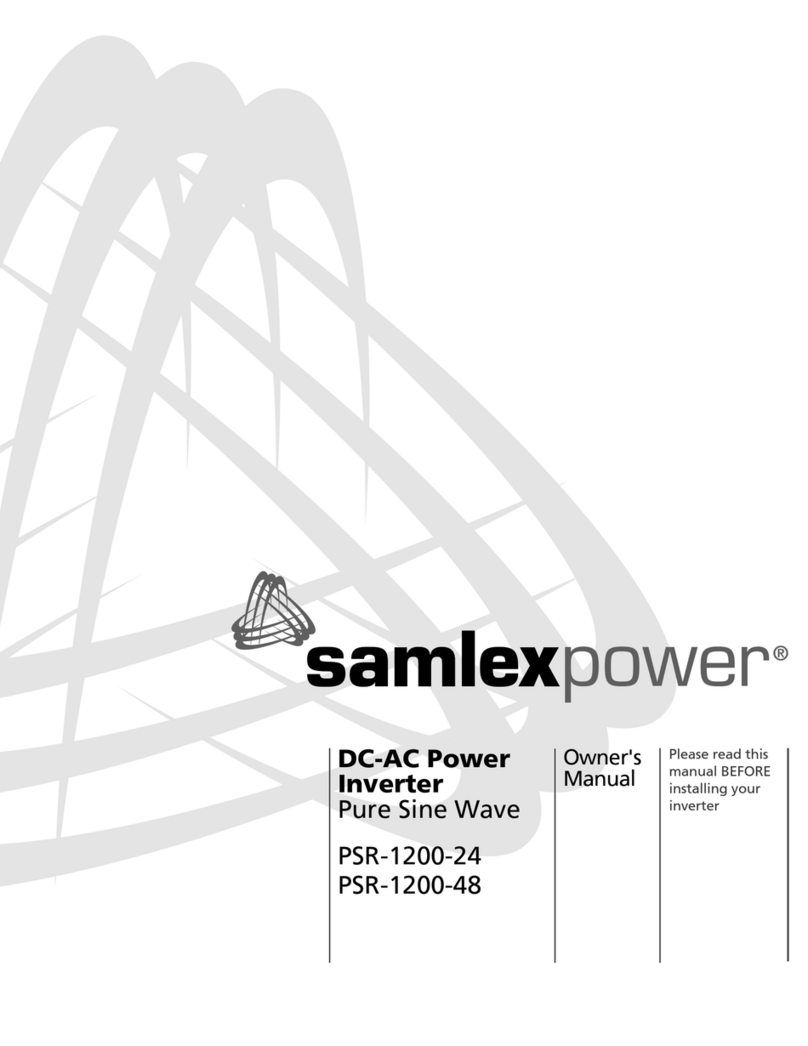
SamplexPower
SamplexPower PSR-1200-24 User manual

SamplexPower
SamplexPower PSE-12100A User manual

SamplexPower
SamplexPower PST-1500-12 User manual
Popular Inverter manuals by other brands

BARRON
BARRON EXITRONIX Tucson Micro Series installation instructions

Baumer
Baumer HUBNER TDP 0,2 Series Mounting and operating instructions

electroil
electroil ITTPD11W-RS-BC Operation and Maintenance Handbook

Silicon Solar
Silicon Solar TPS555-1230 instruction manual

Mission Critical
Mission Critical Xantrex Freedom SW-RVC owner's guide

HP
HP 3312A Operating and service manual
